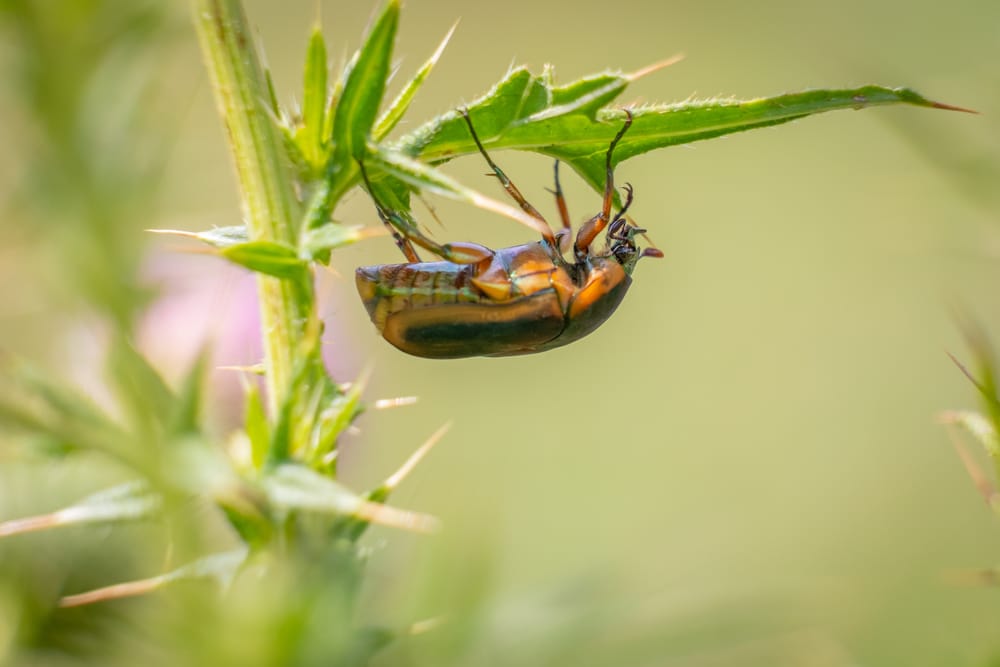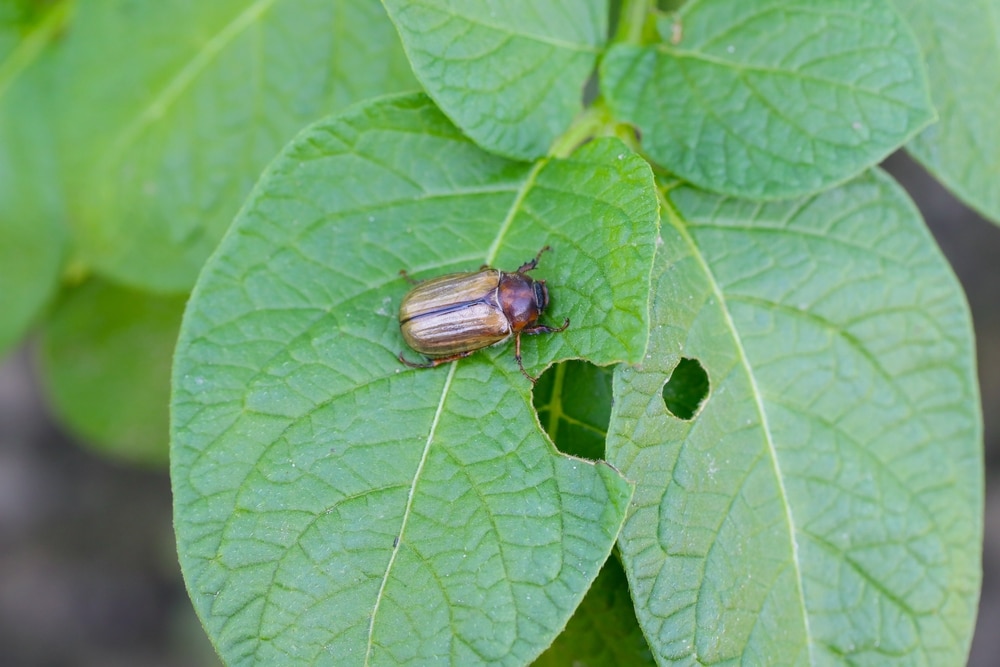Do you remember those warm summer nights chasing fireflies and dodging June bugs? While you may not have given it much thought then, you may be wondering now: what do June bugs eat?
Keep reading to find out!
What Are June Bugs?
First of all, it’s important to know that there are many different types of June bugs or June beetles, and their diet varies. In fact, there are over 800 species throughout the world! However, in North America, the name most often refers to the May beetle found in the western United States and Canada.
These beetles are usually brown or black with no markings, similar to a cockroach and grow to be about half an inch to one inch long. You may have seen them flying around your porch light or crawling on the ground.
What Do Adult June Bugs Eat?
So, what do these little buggers eat? The answer to this lies in their scientific name. June bugs belong to the genus Phyllophaga, which translates to “leaf-eater.” As their name suggests, adult June bugs feed primarily on plant leaves – but will also nibble on fruit, vegetables, and flowers.
In small numbers, this feeding generally does minor damage to the plants. However, if there is a large population of June bugs, they can wipe out entire crops of corn, potatoes, strawberries, and other plants.
What Do June Bug Larvae Eat?
The larvae of June bugs are known as “white grubs.” While the adults chow down on leaves, the larvae feast on roots and decomposing organic material. This can cause extensive damage to plants and crops, another reason why farmers and gardeners consider June bugs pests.
The June bug larvae are also attracted to turf grasses and can cause significant damage to lawns, golf courses, pastures, and other green spaces.
When Do June Bugs Eat?
Adult June bugs are most active at night and often drawn to light sources. In the larval stage, they stay underground for 1 to 4 years, depending on the species. The larvae hatch in late spring, spending most of their summer nights – between May and July – feeding on ornamental flowers, crops, lawns, and shrubs.
By fall, the June bugs begin to burrow into the ground to overwinter. Then, in early spring, they move back up to the surface to mate and start the cycle all over again.
How To Get Rid of June Bugs?
If you’re finding June bugs in your home, there’s a good chance they came in through an open door or window. To prevent them from getting inside, repair any holes or cracks in your screens and doors. Also, if you have a porch light, consider switching to a yellow “bug light” bulb, which is less attractive to June bugs and other insects.
If you’re dealing with June bugs in your garden, the easiest way to get rid of them is by hand-picking them off your plants and dropping them into a bucket of soapy water. You can also try using traps – either commercial products or homemade ones made from jars or plastic bottles.
And if all else fails, you can spray a biological insecticide containing Bacillus thuringiensis (Bt) on your plants. This bacteria is harmless to humans and animals, but it will kill adult June bugs and larvae. Just keep in mind Bt can potentially harm butterfly populations and, therefore, is not recommended for butterfly gardens.

